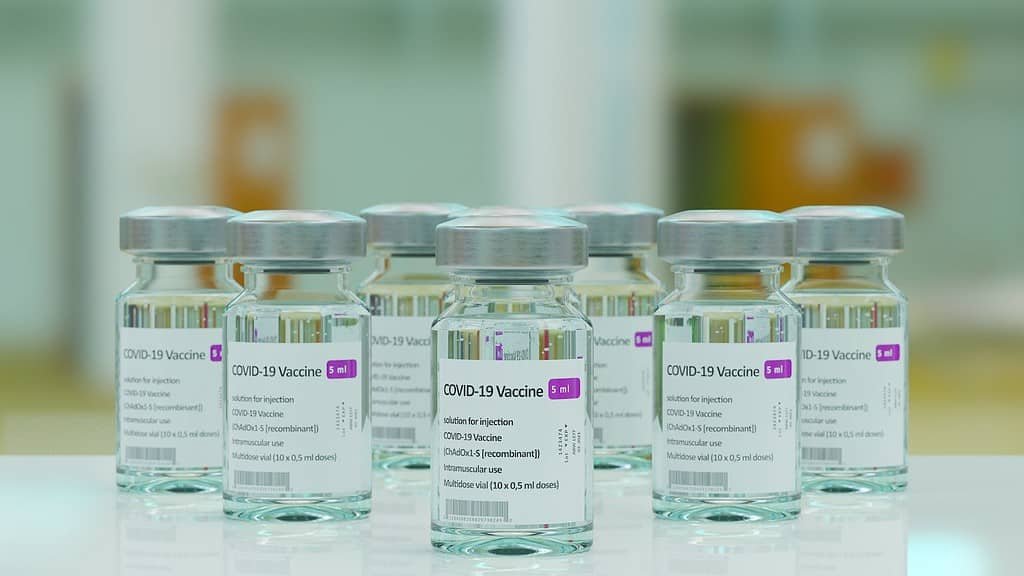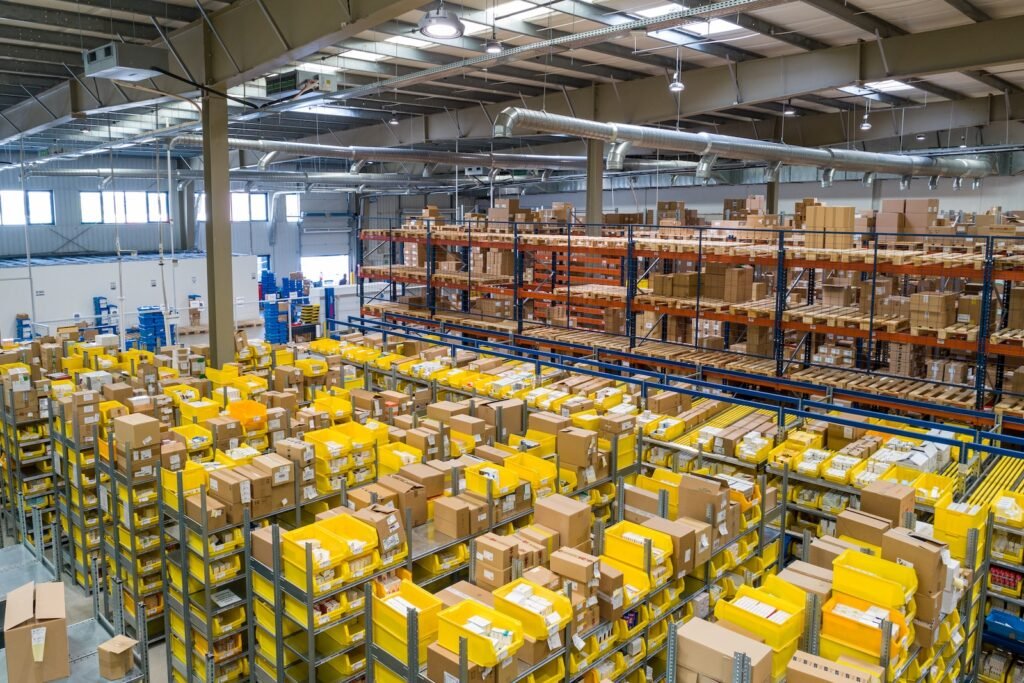Cold storage warehousing, also known as refrigerated warehousing, is a specialized facility designed to store perishable goods and maintain specific temperature conditions to ensure their freshness and quality. Unlike conventional warehouses, which focus on general storage needs, cold storage warehouses are equipped with advanced cooling systems and insulation materials to preserve the integrity of temperature-sensitive products.
The primary purpose of cold storage warehousing is to create an environment conducive for storing perishable items such as fruits, vegetables, dairy products, pharmaceuticals, vaccines, and even chemicals that require controlled temperatures.
By maintaining low temperatures or specific temperature ranges within these facilities, the risk of spoilage and degradation is significantly reduced. This leads to extended shelf life for food products while preserving the efficacy of medicines and vaccines.
Jump Ahead To :
Importance of Maintaining Temperature-Controlled Environments for Various Products
Maintaining temperature-controlled environments in cold storage warehouses is paramount when it comes to preserving the quality and safety of various products. When exposed to unfavorable temperatures outside their optimal ranges, perishable items can rapidly deteriorate due to bacterial growth or chemical reactions. For instance, leaving fruits at room temperature accelerates ripening processes and promotes decay.
Temperature control plays a crucial role in preventing foodborne illnesses caused by bacteria like Salmonella or E. coli. By keeping perishables at low temperatures during storage and transportation, the growth rate of harmful microorganisms is slowed down considerably.
This ensures that when consumers purchase these items from grocery stores or supermarkets, they are receiving safe and high-quality products. In addition to food safety concerns, maintaining precise temperature conditions is vital for pharmaceuticals and vaccines that require strict storage guidelines.
By maintaining specific temperature-controlled environments, these facilities help extend shelf life, prevent spoilage, preserve quality, and ensure the safety of items such as food, pharmaceuticals, vaccines, and chemicals. The intricate balance between temperature regulation and product preservation is what sets cold storage warehouses apart from standard warehousing solutions.
Types Of Products Utilizing Cold Storage Warehousing
Preserving the Freshness: Perishable Food Items
When it comes to cold storage warehousing, one of the primary categories of goods that come to mind is perishable food items. From succulent fruits and vibrant vegetables to delicate dairy products like milk, cheese, and yogurt – these goods require specific temperature and humidity conditions to retain their freshness and extend their shelf life.
Fruits like strawberries, blueberries, and cherries are highly susceptible to spoilage due to their high water content. By storing them in cold storage warehouses at optimal temperatures just above freezing point, these fruits can maintain their juiciness and flavor for longer periods.
Vegetables, too, benefit immensely from cold storage warehousing. Leafy greens such as lettuce or spinach wilt quickly when exposed to warmer temperatures.
By placing them in refrigerated environments with controlled humidity levels, cold storage warehouses ensure that these greens stay crisp and retain their nutritional value much longer than if stored under regular conditions. Dairy products like milk and yogurt are also commonly stored in cold storage warehouses as they are highly sensitive to temperature fluctuations.
These products require constant refrigeration from the moment they leave the production facility until they reach consumers’ homes. Maintaining a consistent cool temperature ensures that the quality remains intact while avoiding potential spoilage caused by bacterial growth.
Safeguarding Health: Pharmaceuticals and Vaccines
In addition to perishable food items, cold storage warehouses play a crucial role in preserving life-saving medications such as pharmaceuticals and vaccines. Many medications require strict temperature control to maintain their effectiveness over extended periods. Vaccines are a prime example of products that demand precise temperature maintenance throughout their distribution chain.
As vaccines contain delicate proteins or weakened pathogens designed to trigger an immune response without causing illness, maintaining strict temperature control is vital. Cold storage warehouses equipped with specialized refrigeration systems ensure that vaccines stay within the recommended temperature range, safeguarding their potency and efficacy.

Controlling Hazards: Chemicals and Hazardous Materials
While food items and pharmaceuticals dominate discussions around cold storage warehousing, it’s important not to overlook the critical role these facilities play in storing chemicals and hazardous materials that require controlled temperatures.
Certain chemicals can be highly reactive or flammable when exposed to fluctuations in temperature. In cold storage warehouses, hazardous materials like paints, solvents, or even laboratory reagents are kept under strict temperature control.
This prevents potential dangers associated with heat-induced reactions or volatile substances evaporating due to high temperatures. By providing a consistently cool environment for these materials, cold storage warehouses minimize the risk of accidents while ensuring compliance with safety regulations.
Moreover, some industries rely on controlled-temperature storage for specific chemical processes where low temperatures are needed. For example, cryogenic gases such as liquid nitrogen require extremely low temperatures which can be achieved through specialized refrigeration systems in cold storage warehouses.
Temperature Management in Cold Storage Warehouses
In cold storage warehouses, maintaining precise temperature control is of utmost importance to ensure the quality and safety of stored products. To achieve this, monitoring and control systems play a vital role.
One commonly used method is the utilization of thermocouples and data loggers for real-time monitoring. Thermocouples are temperature sensors that measure variations in temperature accurately.
They are strategically placed throughout the warehouse to provide a comprehensive overview of temperature conditions. Data loggers, on the other hand, record and store temperature data at regular intervals, allowing warehouse personnel to analyze trends and identify any deviations.
Automated Control Systems with Alarms for Temperature Deviations
To enhance efficiency and minimize human errors in maintaining optimal temperatures, cold storage warehouses employ automated control systems. These sophisticated systems use predetermined temperature thresholds as reference points and constantly monitor the environment.
If any deviation from these set parameters occurs, alarms are triggered to alert staff members promptly. This immediate notification enables timely intervention to mitigate potential risks associated with fluctuations in temperature.
Zoning Techniques to Segregate Different Temperature Requirements within the Warehouse

Cold storage warehouses often handle diverse products with varying temperature requirements. To accommodate this diversity efficiently, zoning techniques are implemented within the facility. One common approach involves creating multi-temperature zones such as chilled, frozen, and ambient areas.
Each zone is equipped with separate cooling mechanisms tailored to maintain specific temperatures according to product specifications. By segregating different temperature requirements within the warehouse, optimal conditions can be achieved while minimizing energy consumption.
Air Curtains or Strip Curtains to Minimize Heat Transfer During Door Openings
Door openings pose a challenge in cold storage warehousing due to heat transfer from outside environments that can compromise internal temperatures stability. To counteract this issue, air curtains or strip curtains are often installed at entry points.
Air curtains emit a downward-flowing stream of air that acts as an invisible barrier, reducing the infiltration of warm air when doors are opened. Strip curtains are another effective solution and consist of overlapping plastic strips that create a barrier while allowing for easy movement in and out of the warehouse.
These measures help maintain temperature integrity, reduce energy consumption, and prevent temperature fluctuations caused by frequent door openings. By implementing robust monitoring and control systems, utilizing thermocouples and data loggers for real-time monitoring, employing automated control systems with alarms for temperature deviations, utilizing zoning techniques to segregate different temperature requirements within the warehouse, and installing air curtains or strip curtains to minimize heat transfer during door openings, cold storage warehouses can effectively manage temperatures to ensure the preservation of perishable goods while maximizing operational efficiency.
Conclusion
When it comes to safety in cold storage warehousing, meticulous attention is paid to prevent fire hazards and handle hazardous substances appropriately. From specialized fire suppression systems like pre-action sprinklers to strict adherence to safety protocols, these warehouses prioritize the well-being of their employees and the protection of valuable inventory. Additionally, being prepared for unforeseen events through emergency backup systems ensures that temperature control is maintained even in challenging circumstances.
With safety measures firmly in place, cold storage warehouses stand as secure havens for perishable goods and essential products alike. So next time you enjoy a perfectly ripe fruit or receive a life-saving medication, remember the lengths these facilities go to ensure the safe storage of these valuable items.
If you are also interested in the broader distribution process , checkout our full in-depth guide on product distribution!






